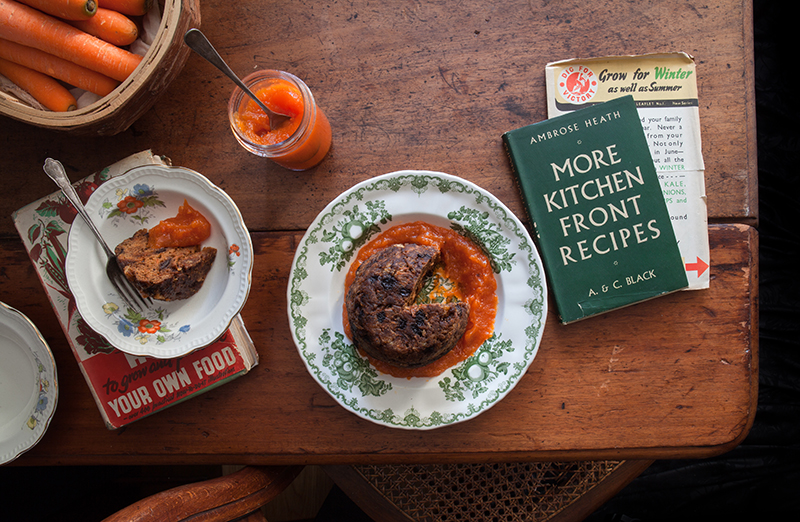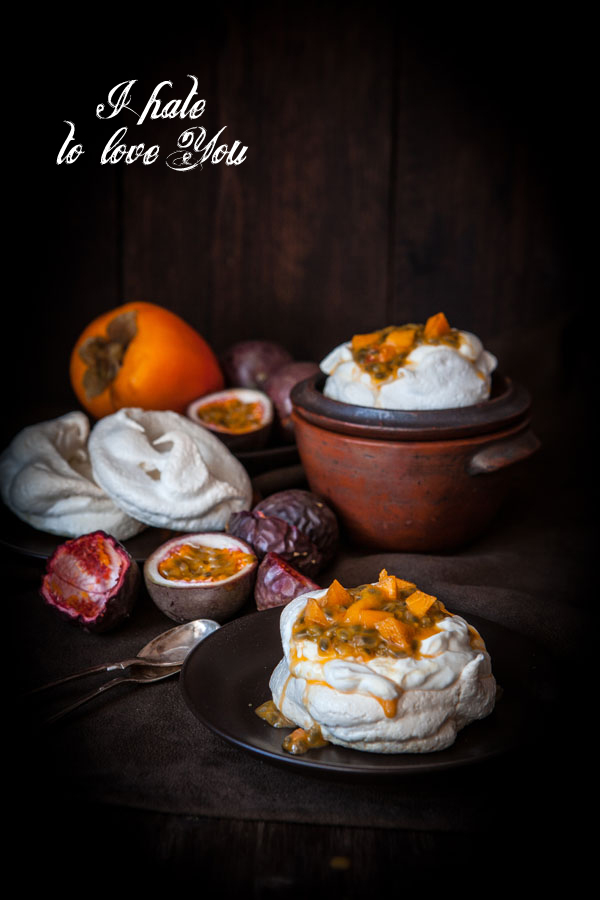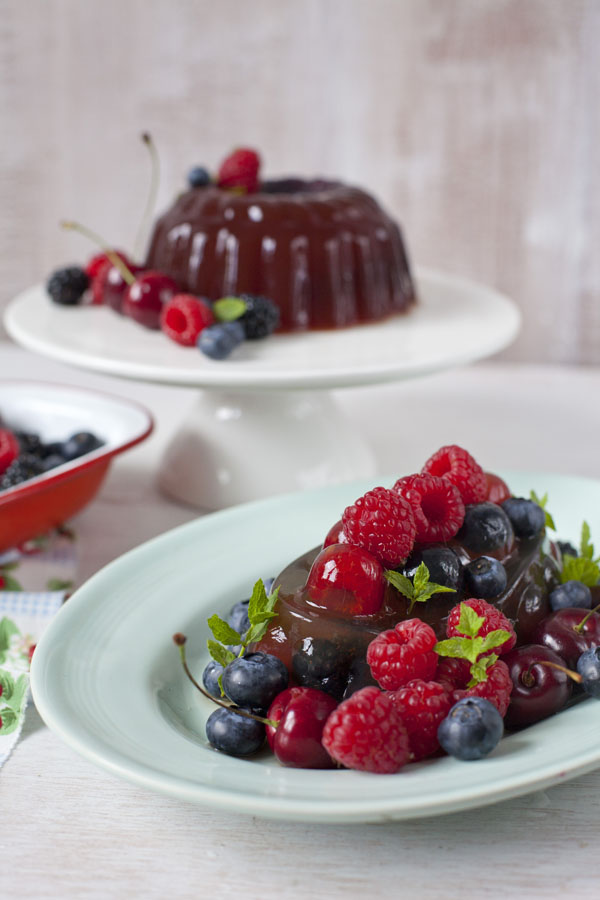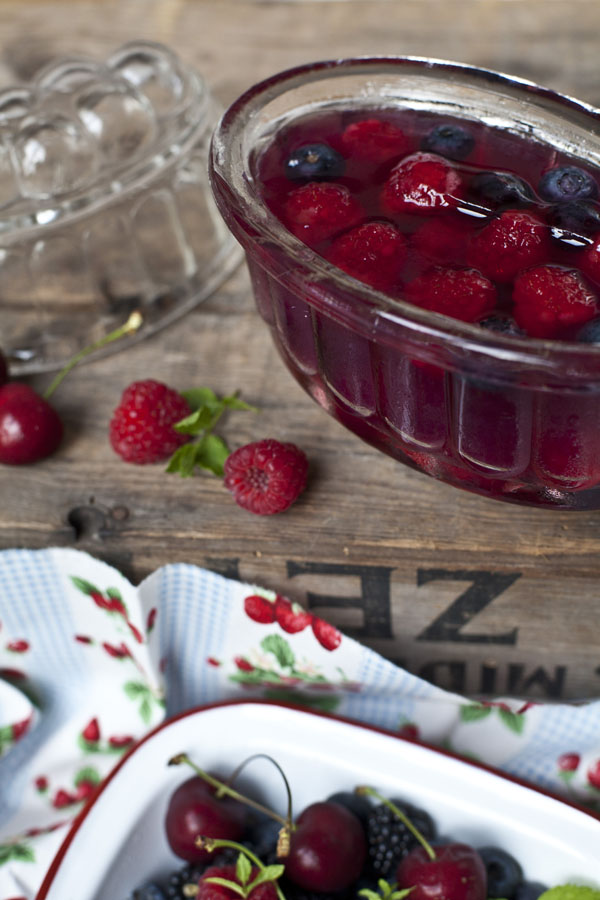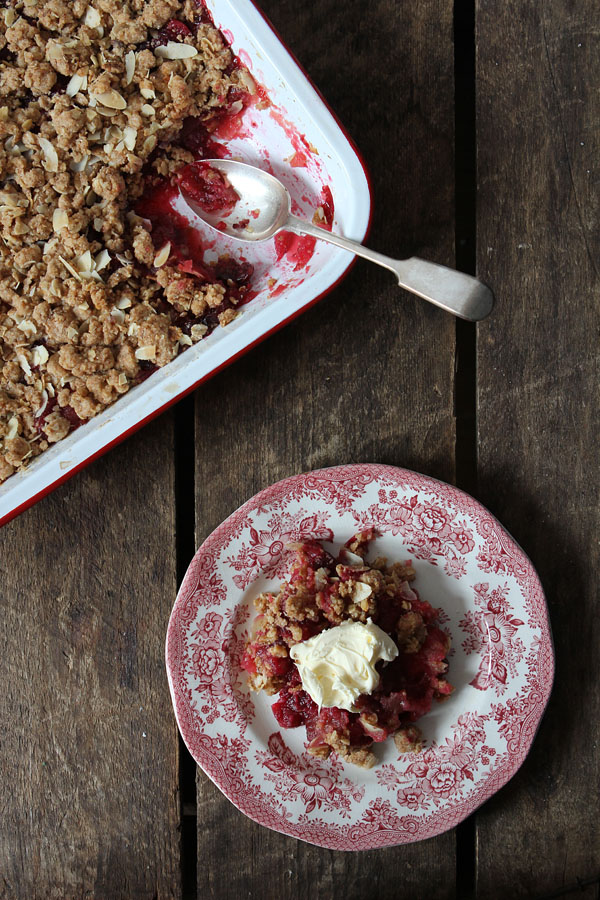Today 8 may I’ll be showing two war-time recipes over at London’s Borough Market for the 75th anniversary of ‘Victory in Europe Day’ or the end of WWII.
While world wars and lockdown are very different, both have led to difficulties obtaining certain ingredients. We’ll be looking at two war-time recipes that were actually promoted by the Ministry of Food because there was an overload of carrots and potatoes. Recipe booklets were made to help cooks to whip up a variety of recipes with carrots and potatoes and other austere but often very delicious creative recipes…
dessert
Persimmon roll cake
 Turns out I’ve never experienced a persimmon in its prime. Doubtful about the overly ripe state of my bunch I was assured that this is how a persimmon should be eaten. Carefully cutting into the skin and scooping out the jammy flesh. A whole new world of persimmon opened… how on earth have I never tasted a ripe specimen before? I like them quite hard, eaten pared like a peach but this is something else. It opens up so many possibilities. The flesh scooped on thick yoghurt or even a creamy dessert or ice cream.
Turns out I’ve never experienced a persimmon in its prime. Doubtful about the overly ripe state of my bunch I was assured that this is how a persimmon should be eaten. Carefully cutting into the skin and scooping out the jammy flesh. A whole new world of persimmon opened… how on earth have I never tasted a ripe specimen before? I like them quite hard, eaten pared like a peach but this is something else. It opens up so many possibilities. The flesh scooped on thick yoghurt or even a creamy dessert or ice cream.
A thick jam to spread on toast, eat with a good blue cheese or use as a filling for a light sponge cake.
American readers have told me their mothers used to make persimmon pudding and persimmon biscuits. Possibilities with persimmon are plenty, that is if you have the patience to let the orange baubles ripen enough for them to almost burst.
Having received a bunch of persimmon as a gift, the fruit still beautifully attached to their wilted branches, I wanted to make the most of this little crop….
Latvian Rye Trifle and a visit to Riga
 In februari last year I went on a backpacking trip to Latvia, I was doing some research for one of my projects and with it met up with a woman I had met at the Oxford Symposium.
In februari last year I went on a backpacking trip to Latvia, I was doing some research for one of my projects and with it met up with a woman I had met at the Oxford Symposium.
One of the most memorable things I ate while in Latvia was a Rye bread trifle with cranberries on lingonberries they call ‘Rupjmaizes kārtojums’. It is made by grating the iconic sweet Rye bread and lightly frying the crumbs then layering it with cream and curd cheese and the tart red cranberries they use so often in their cuisine. It was offered to me by the host in ‘Zaku Krogs’ a most wonderful Jamaica Inn-like ex-rabbit hunters Inn in Jurkalne which is about an 2,5 hour drive from Riga. The drive there takes you through forests which are laden with berry shrubs and strange small villages with Soviet-style blocks of flats.
 On our way to Jurkalne we visited Ildze’s friend who works in the office of a sprat canning factory where all the people from the surrounding villages work. It was a unique insight to how this works, the sprats are delivered daily and extremely fresh and processed that same day. Processing means they are sorted by size and arranged on hooks by a group of women, then they are smoked – no artificial dye here – and then another group of women sorts the sprats neatly in their tins like braided hair. Then the sprats get a generous blob of salt on them, rapeseed oil and the tins are closed and finally pasteurised….
On our way to Jurkalne we visited Ildze’s friend who works in the office of a sprat canning factory where all the people from the surrounding villages work. It was a unique insight to how this works, the sprats are delivered daily and extremely fresh and processed that same day. Processing means they are sorted by size and arranged on hooks by a group of women, then they are smoked – no artificial dye here – and then another group of women sorts the sprats neatly in their tins like braided hair. Then the sprats get a generous blob of salt on them, rapeseed oil and the tins are closed and finally pasteurised….
Sticky toffee pudding with prunes
 Although I’m now one of the judges on our very own Bake Off in Belgium, I still miss the Great British Bake Off on my television screen every week around this time. As we can only get BBC 1&2, Bake Off has been off-limits to us since its move to Channel 4. GBBO has less viewing figures than when it aired on BBC, that’s partly because they lost viewers from outside of the UK. It seems however that our ‘series one’ of Bake Off Vlaanderen came at the right moment, everyone who misses GBBO in Belgium can soothe their Bake Off hunger by watching us! (if you want to watch it online, you can by going to this page – go to the films with the word ‘Aflevering’ (episode) and there you need to be filling out some details to count viewing figures, the system asks to create a password an to leave your address, just enter 2000 Antwerp)
Although I’m now one of the judges on our very own Bake Off in Belgium, I still miss the Great British Bake Off on my television screen every week around this time. As we can only get BBC 1&2, Bake Off has been off-limits to us since its move to Channel 4. GBBO has less viewing figures than when it aired on BBC, that’s partly because they lost viewers from outside of the UK. It seems however that our ‘series one’ of Bake Off Vlaanderen came at the right moment, everyone who misses GBBO in Belgium can soothe their Bake Off hunger by watching us! (if you want to watch it online, you can by going to this page – go to the films with the word ‘Aflevering’ (episode) and there you need to be filling out some details to count viewing figures, the system asks to create a password an to leave your address, just enter 2000 Antwerp)
Luckily there is social media to keep me informed of the happenings on GBBO and this morning I heard from the lovely Lia of the Lemon & Vanilla blog that tonights episode will feature pudding week! The bakers task is to make a steamed pudding and because I’ve published a whole tome on pudding – savoury and sweet – (in my book Pride and Pudding) I thought I’d share with you one of my favourite sweet steamed puddings: the sticky toffee pudding.
When going for a nice long walk in the British countryside there’s only one thing I long for and that is a pub meal ended with a sticky toffee pud accompanied by a Whisky. It’s the ultimate pudding to have after good outdoor exercise. This is definitely an occasion where I leave room for pudding. A delightfully light yet heavy steamed bit of cake batter, always in a pudding basin, never in the shape of a log please, drowned in custard or with a side of vanilla ice cream which is essentially frozen custard anyway.
Many puddings are surrounded by legends and this is one of them. It is said that the sticky toffee pudding was invented in the 1960s by Francis Coulson of the Sharrow Bay Hotel by the majestic Ullswater lake in the Lake District. He called it an ‘icky sticky toffee sponge’….
Galette Des Rois and other food celebrations
 I hope you all had a wonderful Christmas if you celebrated it, and I wish you a smashing new year! There are lots of exciting things to come of which I will tell you more very soon but until then…
I hope you all had a wonderful Christmas if you celebrated it, and I wish you a smashing new year! There are lots of exciting things to come of which I will tell you more very soon but until then…
Since in the previous years I told you about English Epiphany or Twelfth Day celebrations, I thought I’d share the tradition of my side of the English channel with you today.
Like the Twelfth cake of which I wrote two years ago (see the post here), in my region we also have a cake, or tart with a hidden bean, coin or trinket.
It is called a ‘Three Kings Tart’ or ‘Driekoningentaart’, a puff pastry pie filled with the most satisfying almond filling which is when made well – addictive. If you find the bean or trinket in your piece of tart you are king for the day and the crown is all yours. To my regret I never found a bean in my piece of tart until two years ago. Oh the disappointment when I was a little girl, the frustration that it was always one of the adults who got the crown! I mean, they should have hidden it in my piece, shouldn’t they?? Traditionally the children would go out to sing from door to door for sweets and money, dressed up like the three kings.
We sadly haven’t got a traditional drink like the Lambswool (see that post here) which comes with the beautiful tradition of ‘wassailing’ which means to feast and run around the orchards to chase away evil spirits and wake up the trees.
I can’t tell you how much I adore this tart and the sight of bakery shop windows filled with ‘Galette Des Rois’ all topped with a festive golden paper crown. It reminds me of the stories I read about children gathering outside the bakery’s shop window to see the magnificent Twelfth Cakes over a century ago. The seasonal bakes that appear in bakeries always make my heart skip a beat. I walk passed Antwerp’s oldest bakery just to see the window display: the large speculoos figurines around Saint Nickolas, the chocolate eggs around Easter, the prune tarts when it’s Ash Wednesday and these terrific ‘Three Kings Tarts’ which the French and our French speaking Belgians call ‘Galette Des Rois’. In France the tarts are also known as Pithiviers, named after the town in the Loiret in the south of Paris, where they allegedly originated from….
Quince tart and our workshop in Dorset
Two weeks ago on a frosty yet sunny winter morning, we welcomed our workshop attendees at All Hallows Cookery School in Dorset. We started with tea and mini mince pies plus pancakes from the AGA for the early birds. It was hard to get started because we were all having so much fun getting to know each other, or catching up. We made the more delicate puddings from my book, a sweetmeat pudding – otherwise known as the Bakewell pudding, Snake fritters and a quince tart with intricate pastry work. Lunch was beef with prunes, lovingly prepared by our host and owner of the school Lisa Osman. I can’t think of a dish more fitting on a day of English cooking. After all, beef and pudding have been the icon of English food for many centuries. There was a time during the Napoleonic war when eating roast beef and plum pudding would have showed your patriotism. Visitors from all over Europe spoke with high regard about the quality of English meat and beef especially.
After our rather festive lunch in Lisa’s beautiful dining room which made me feel as if I was in a Jane Austen novel, she taught us wreath making which sounds far more easy than it actually was. We struggled and have a huge respect for wreath makers now. We all concluded we now understood why a impressive wreath is so pricy. It takes a ton of work, and will leave you with very painful hands. I finished mine at home and now have it on my front door for all to see….
Bakewell puddings and Bakewell tarts
It was Bakewell tart on Great British Bake Off yesterday last week! And when Mary said this is what a Bakewell tart should look like… I had to disagree. Traditionally early Bakewell tarts did not have a topping of icing. Nor do they have that lonesome cherry which we associate with cheap shop bought mini-bakewell tarts. Mary’s Bakewell tart didn’t have the cherry but did have the icing with a fancy pattern. It looked the part, don’t get me wrong, but if you visit the town of Bakewell you will see that proud Bakewell tart bakers clearly state that they do not add icing to their Bakewell tarts as icing is not part of the original recipe… But what is the original recipe? When does it stop or start being original? It’s a tough question.
And then there’s that other Bakewell bake… The Bakewell pudding!
Imagine a pub in a quintessentially English village: you enter with an appetite and the special on the menu is a pudding named after that village. You just have to try it, don’t you? And so the Bakewell pudding rose to fame. Even though Wonders of the Peak, the first travel guide to the Peak District, was written by Charles Cotton in 1681, tourism reached a high in Victorian times, helped by the development of the railway and an increasing interest in geology. Victorians also came to ‘take the waters’ in the spa towns of Buxton, Matlock Bath and Bakewell….
Passion fruit, Persimmon and Pepper Pavlova – I had a love/hate relationship with merengue
For a history geek like me it is interesting to see how the Valentine’s traditions came to be. There are a lot of theories surrounding its origins but it seems that the first time Valentine’s day was linked to love can be traced back to the 14th century.It was the English poet Geoffrey Chaucer, mostly known for The Canterbury tales who mentioned Valentine’s day in his The parlement of foules C 1381.
For this was on seynt Volantynys day Whan euery bryd comyth there to chese his make.
In modern English: For this was Saint Valentine’s day, when every bird of every kind comes to this place to choose his mate.
It is not known why the date 14 february was chosen, but of course there are a lot of assumptions. There wasn’t even one Christian Valentine, there were several martyrs with this name. It is however only since Chaucer’s mention in the Middle Ages that Valentine’s poems start popping up in history. The first ever love poem linked to Valentine’s day is believed to be by the hand of Charles Duker of Orleans who was captured in 1415 by Henry V because he was in line for the French throne. During his imprisonment he wrote a poem to his wife which links the day directly to a declaration of love. In his first few words he wrote:
Je suis desja d’amour tanné
Ma tres doulce Valentinée
Since then, there have been innumerable other Valentine’s poems and the Valentine’s business is now rather about money than it is about love.
It seems that people need a date for things, Valentine’s for lovebirds, Stir-up Sunday to prepare the Christmas pudding and Black friday to spend your hard earned money on sales. And no matter how much ‘fun’ celebrating Valentine’s day can be, we should show our love and appreciation – respect – for each other on every day of the year. Because the every day – is what counts. The little things.
My lovely Bruno made me a bun with cheese to eat in the car before a workshop a few weeks ago – that is love my friends and it says a million more words than a Valentine’s card can say.
Have a good Valentine’s everyone! I’m sending you my love!
For you on this day this Passion fruit, persimmon pavlova with a hint of pepper to spice things up!
Find my recipe on the Great British Chef’s blog here >
And read about how I have had a love/hate relationship with merengue since I was a little girl.
Jolly Jelly, you know what? I’m writing a book!
One would think the dark ages were a dark time… Reading books like Umberto Eco’s ‘In the name of the Rose’ certainly leads us to believe that it was.
But the fact is that there was a love for bright colors that can be witnessed in the illuminated manuscripts from that time. On the table brightly colored layered jellies were made by boiling pig’s or cow’s feet into gelatin. It must have taken the cook hours to prepare, deriving the colors from blood, berries, vegetables and Essex saffron, the jellies were decorated and scented as magnificent displays of the cooks talent.
Jellies weren’t the desserts as we know them now, they would be savoury rather than sweet most of the time, sometimes even encasing whole fish for a dramatic effect.
Gelee of fleshe -meat jelly- was a traditional Medieval dish and made by cooking pigs trotters and ears, calf’s feet and chicken in white wine. The jus and fat would then be reduced until it formed a jelly and the meat served with it.
We still have meat jellies today in the form of ‘aspics’, covering pieces of meat, vegetables and sometimes eggs with gelatine made from beef bones.
In culinary school, where we are taught the classic French cuisine we had to prepare a seafood jelly which was a terrible waste of perfect seafood and we also used jelly to decorate meat and fish with delicately sliced vegetables to then lightly cover it in gelatine to protect it from the air. Perfect for when you are preparing a buffet but a little old fashioned if you ask me.
But it is very fascinating to think of it, that a medieval practice of encasing foods in jelly is still widely used today, centuries later. Now the sweet jellies are most popular, in bold colors and fun flavours and shapes, it is still a showstopper on your table as much as it was in the Middle ages.
That showstopper effect was exactly what I had in mind when I bought a vintage jelly mould in a charity shop in Sherborne, a Dorset village that has remained unspoiled by time.
The mould quickly got a life of its own being baptised ‘The Sherborne Mould’ by two charming ladies of the village, enquiries about its use are being made and pictures of the finished product requested. I was glad to see I’m not the only one getting excited about a jelly mould, happiness can be found in the small things you discover in charity shops.
When I write this I’m getting ready to drive off to the – hopefully sunny – south of England. I will be on the hunt for stories and at the same time giving my husband the quality time he deserves. I’ve been a bit absent of late because of the exciting things happening in my life because of this blog. I’m so thankful we are both creative minds and always pursuing our dreams through our creative work. We understand those moments when your inspiration comes and all you can really do is create. Time starts flying as hours become minutes and suddenly you find yourself having to turn on a light because you’re trying to write, or draw in the dusk.
I’ve been working on a project for months and now I feel I should tell you about what I’ve taken on, a project that will take me ages to complete to the level I want it to reach. Yes it is a book, my book, my life’s work.
A celebration of British culinary history, lovingly painted by my warm feelings for Britain.
For this jelly I am using the vegetarian version of gelatine namely Agar agar, it is made from a kind of seaweed.
What do you need
- 400 ml water
- 2 packs of Agar-agar (vegetarian gelatine)
- 2 tablespoons of caster sugar
- 150 ml Dandelion and Burdock, if you can’t find it, why not use Pimms!
- 1 teaspoon of beetroot juice (for color)
- Mixed berries, raspberries, blackberries and blueberries
Method
- Rinse your jelly mould under water and put it in the freezer, this will make the jelly set faster and make it easier to remove from the mould.
- Warm the water in a saucepan and add the Agar-agar, stir well so the powder is completely dissolved. Bring to a gentle boil then add the Dandelion and burdock and beetroot juice and let the mixture bubble for a further minute. Leave to stand for a few minutes before pouring the mixture into the mould
- Take your jelly mould out of the freezer, add fruit if you like and pour the jelly mixture into the mould.
- Leave it to set, in the fridge if you like but it can just as easily set out of the fridge.
- To get the jelly out of the mould, prepare a basin with hot water and dip the mould in it to release the bottom part.
- Turn out over a plate and decorate as you like.
You might also enjoy
Raspberry vinegar
Blaeberry pie
Raspberry and strawberry fool
Cranberry and Apple Spelt Crumble – a review of the new Falcon enamelware
Those blue rimmed pie dishes, plates and mugs are something I’ve always associated with Britain …
Imagine a rustic wooden table in a ‘chocolate box cottage’ kitchen, I’m sure you can see the white enamelware stacked somewhere in easy reach. Because these are practical utensils, durable and -yes in my opinion- pretty to look at. They are the essential oven to table ware, the perfect picnic crockery and the last thing we like to see when finishing a delicious blueberry pie.
Falcon enamelware seems to have always been there on your kitchen shelve, like the color blue in the sky and the smell of freshly mowed grass in the air. A thing your kitchen needs, a thing that will age with you and even outlive you.
I love these simple and timeless objects. Yes, I find happiness in the little things …
I would hope for my future children to cherish my old enamelware and have memories of me serving him or her a cranberry and apple crumble in them. I would give them a set of their own when they marry, to keep in arms reach in a cupboard in their kitchen too. More on the origins of the humble crumble later on…
The people at *Falcon asked me to test their bake set and I love it.
They have re-launched their line of enamelware and now have a few new vibrant and attractive looking colored rims and they are even more durable as some of the items are fitted with a much heavier gauge. This makes them a bit more expensive than the old range but you do get a better product.
I’m blown away by the red ones… if you know me … well … red is my color!
Apart from new colors the design mostly stayed the same, thank god for that.
I am missing the round pie dishes though, but perhaps they will be re-launched eventually as well.
The sets come in great looking boxes, the graphic designer in me approves.
I will most likely keep the box as well …
The first thing I baked was a Cranberry and Apple Crumble.
War II. History says that the Apple Crumble was invented due to strict food rationing,
to replace the apple pie which contained too much quantities of flour compared to the crumble. A simple mixture of flour, bread crumbs, margarine (during the war there was a shortage of real butter) and sugar created a pastry lid over stewed fruit.
Cranberry and Apple Crumble
What do you need
- 650 g cranberries
- 2 Bramley or any other cooking apple diced
- 100 g soft raw cane sugar
For the crumble
- 100 g wholemeal spelt flour
- 50 g raw cane sugar
- 60 g rolled oats (I sometimes use muesli)
- 100 g cold unsalted butter
- 0,5 cup of shaved almonds
Method
- Braise the fruit in a pan, with sugar over medium heat.
- Leave the fruit whole, it should not me reduced to jam
For the crumble
- Mix flour, sugar and oats.
- Rub the butter into the mixture, I like to use a knife to do this at first, this way the butters stays cold.
- Add the shaved almonds.
- Now use your fingers to bring the dough together leaving it rough and crumbly.
- Put the mixture into the fridge for about an hour.
Preheat the oven to 160° celsius
- Place the fruit in the baking tray
- Arrange the crumble on top, divide evenly
- Put in the top side of the oven and bake for 30 to 40 minutes
Serve with Clotted cream or vanilla ice cream.
Enjoy!
You might also like
Bramley apple and blackberry pie >
I love reading your comments and will reply as soon as possible.

